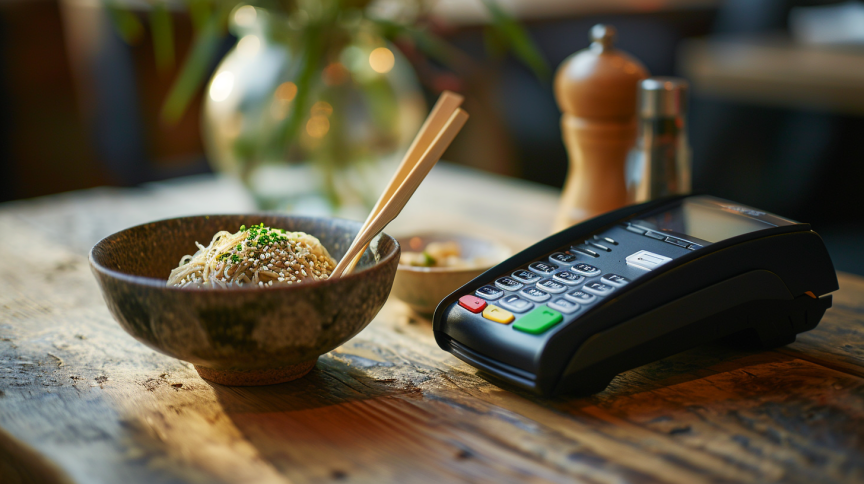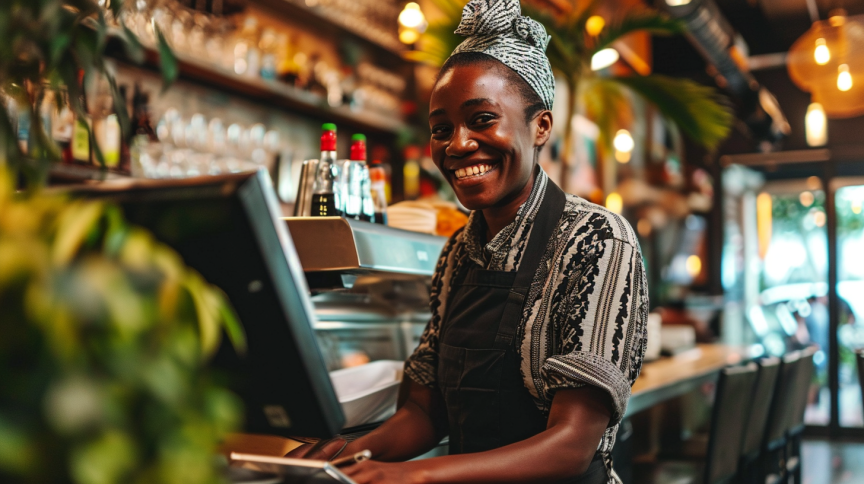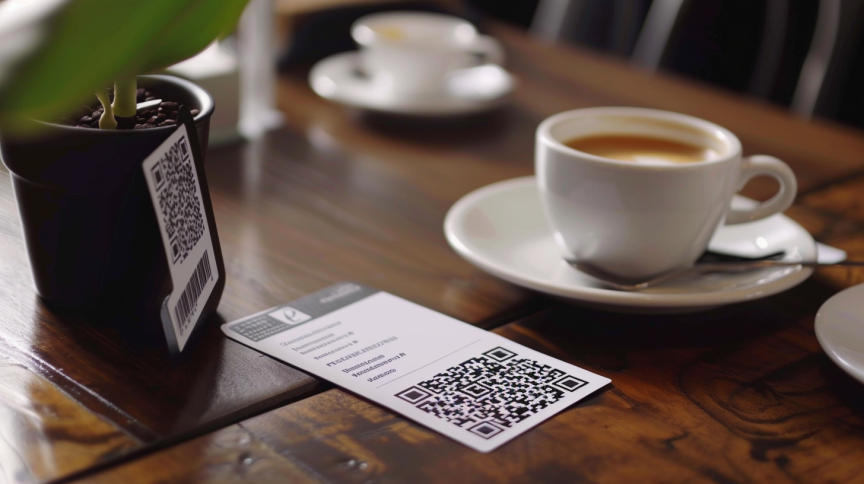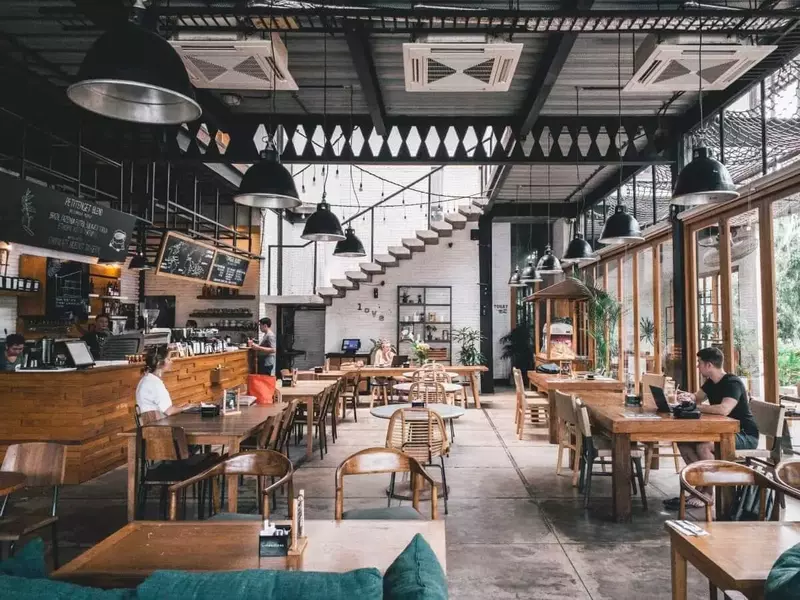The Impact of Technology on Restaurant Operations in Canada

Improving restaurant processes can reduce costs and maximize profits, boosting your bottom line to fuel long-term business growth. It can enhance the guest experience, attracting more diners and compelling the most valuable customers to return.
Technology is the key to better operations. According to a recent consumer survey, 68% of Canadians like using technology in restaurants (e.g., to browse a menu and order food).
Let’s see how restaurants can leverage technology to improve various aspects, meet customer expectations, and thrive.
How to Use Technology to Improve Restaurant Operations
Canadian restaurant owners increasingly implement technology to optimize operations and drive more revenue. Here are the most notable aspects where tech can reign supreme, from on-site and online ordering, reservations, and transactions to stock and vendor management, staff scheduling, and digital marketing.
POS Systems

Cloud-based POS (Point-of-Sale) systems have replaced their traditional counterparts, enabling restaurants to oversee and manage all operations from one centralized place. They store all data, including payments, stock, prices, sales, and reservations.
The best part about POS systems is that they integrate with multiple third-party software, including CRM (Customer Relationship Management) tools. They also welcome hardware integrations, including intuitive kiosks for in-store orders and payments. Other excellent additions include:
- Kitchen Display Systems – KDSs connect your FOH (Front of House) and BOF (Back of House). They enable restaurant management and kitchen staff to collaborate with customer-facing personnel for seamless order fulfilment.
- Customer Display Systems – Besides ensuring transparency at checkout, CDSs can showcase promotions, dynamic menus, and loyalty programs for the most valuable customers. The Givex survey revealed that 56% of customers are more likely to visit a restaurant if it has a business loyalty program.
- Driver Display Systems – Restaurants offering delivery services can install DDSs outside to help drivers organize and save time.
In a nutshell, POS systems are central hubs for all restaurant business needs, helping improve the overall service, experience, and sales.
Menus and Ordering

In the Canadian food industry, seamless online ordering and innovative menu solutions like on-table QR code menus are becoming a standard expectation among diners.
On-Table QR Code Menus
On-table QR code menus enable customers to browse foods and beverages without waiting for a server and order and pay using mobile devices. Besides saving time, they minimize errors, cut costs, and are eco-friendly. They allow real-time updates to prices and menu items, eliminating printing needs.
The same survey found that 36% of Canadians prefer a QR code menu because they can see images before ordering, while 30% cited the option to personalize their orders. Ordering without waiting for a server is the deciding factor for 27% of diners.
Another report revealed that, according to 19% of Canadian diners, ordering and paying through a QR code menu is a significant benefit.
Self-Service Kiosks
79% of Canadians prefer self-service kiosks for more streamlined orders. The most prevalent reasons include:
- Viewing menus at their own pace (44%)
- Finding favourite items (38%)
- Choosing ingredients to personalize orders (22%)
- Discovering seasonal or new foods and beverages (20%)
- Enjoying faster payments (36%)
Seamless Online Ordering and Delivery
Many restaurants implement automated mobile services to fulfill orders without developing a website. Some partner with third-party aggregators, while others have dedicated apps. The former may provide instant reach since 51% of Canadians order food 2–4 times monthly via third-party delivery apps, [3] but the latter means keeping more profits.
Contactless Payments
24% of customers would avoid restaurants that don’t offer contactless payment options. The good news is that most food service businesses do.
As much as 69% of restaurants offer tableside payments, ideal for faster, more accurate orders and higher tips. Most POS systems in the Canadian restaurant industry have mobile payment terminals and contactless card readers, meeting customer expectations.
Digital Marketing
Digital marketing can raise brand awareness, increase online visibility, drive customer engagement, enhance customer experience, and boost sales. That especially rings true for social media since 30% of Canadian diners check restaurants’ social profiles for high-quality images before ordering.
Digital marketing essentials for restaurant owners (no matter where they are) include the following:
- A mobile-friendly website with an engaging blog showcasing the brand’s personality and establishing thought leadership in the industry;
- Local SEO for driving organic traffic and sales;
- An active social media presence for interacting with customers, boosting engagement, and promoting deals;
- Influencer marketing for extending reach;
- Email marketing for nurturing leads and personalizing relationships.
Restaurants can implement these strategies with adequate technology. Some tools include CRM, SMM (Social Media Marketing), email, SEO, sales intelligence, and analytics software. The best part is they all integrate with POS systems.
Inventory and Vendor Management

Effective inventory and vendor management is crucial for restaurant managers in Canada to streamline reorders and maintain adequate stock levels. The same goes for preventing overstocking and minimizing food waste. Optimizing inventory management is the top priority of 37% of restaurateurs (including 35% of quick-service and 37% of table-service restaurants).
Inventory management systems with real-time tracking can help optimize stock levels to prevent financial losses and food waste. AI-based tools can even recommend and schedule reorders according to historical and current data, enabling restaurant employees to meet demand.
Most POS systems have inventory and vendor management capabilities. Many synchronize stock and sales data to place automatic vendor purchases before kitchen staff runs out of supplies and ingredients. They’re the key to streamlining your back-of-house processes and ensuring your front-of-house personnel provide what customers expect.
Staff Scheduling
Staff scheduling tools are critical for restaurant businesses because they enable managers to track employees covering each shift and organize work schedules, days off, vacations, and sick days. Besides saving time for kitchen staff and other employees, automation can minimize the risk of human error, reduce incorrect orders, and accelerate the service.
38% of Canadian restaurateurs plan to automate operations to boost staff efficiency. Nearly all agree that increased automation for back-of-house processes would free time to focus on critical business tasks.
Some industry POS systems have scheduling capabilities, allowing employees to manage shifts, clock in and out, and improve decision-making using staffing data. However, scheduling software integration provides more functionalities, including budgeting for labour cost optimization. This enables restaurants to follow best practices, prevent understaffing, and focus on customers.
Reservations
Restaurant establishments increasingly implement online ordering services, but some dial it up a notch by enabling diners to reserve tables on the go. That’s a massive time-saver for front-of-house restaurant management because employees can focus on the service instead of managing seating and wait lists.
It’s also beneficial for guests because they check the menu online and pick desired seats according to their dining preferences. 66% of Canadian customers prefer automation over life staff in at least one dining experience aspect. That includes making reservations online or via an app, a preference of 36% of customers.
Some online restaurant reservation systems have features for personalizing dining experiences. For instance, consumers can choose tasting menus, customize dishes, and select the best wine pairings to create a unique, memorable experience.
Have You Adopted the Latest Restaurant Technology Canada Offers?
The Canadian restaurant industry keeps booming, primarily because of cutting-edge technology. Tech automates processes, provides actionable insights, makes ordering and payments frictionless, and helps create unforgettable experiences. It’s the key to more revenue and long-term growth, no matter where your restaurant business is.
FAQ
What is the best technology for restaurant businesses?
The best technology solutions for restaurant businesses include:
- POS systems
- CRM software
- Contactless card readers
- Mobile payment terminals
- Order processing solutions
- Stock tools
- Staff scheduling software
- Online reservation systems
- Kitchen, customer, and driver display systems
What are the leading restaurant tech trends?
The most notable tech trends involve contactless solutions, including on-table QR code menus and interactive kiosks for orders and payments. Others include mobile and online ordering, reservations, delivery services, and AI-powered stock management.
What impact do QR codes have on the restaurant industry?
QR codes have significantly impacted the restaurant industry by allowing customers to scan menus and facilitate ordering easily. They eliminate language barriers through menu translation and greatly improve the restaurant’s overall customer experience.
How can restaurateurs improve operational efficiency?
To improve operational efficiency, restaurants can leverage automation to save time, reduce costs, boost productivity, and drive insights from customer data. Automating processes can improve work culture and guest experiences, fuelling better, data-driven decision-making.
What can negatively impact a restaurant’s operational efficiency?
Overstocking, understaffing, incorrect orders, and slow ordering and checkout can negatively affect operational efficiency. However, technology can address those problems.
Resources
https://leyton.com/ca/insights/articles/the-impact-of-technology-on-the-food-industry/
https://oakbusinessconsultant.com/impact-of-technology-on-the-restaurant-industry/







